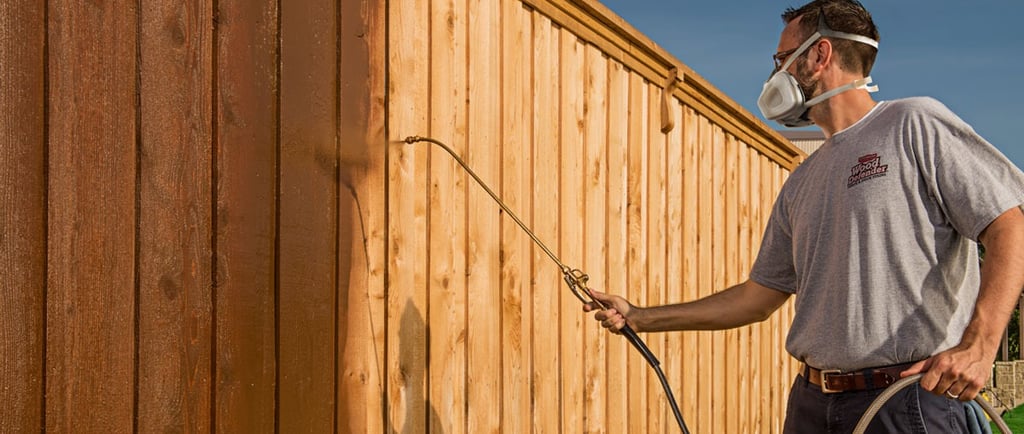Why Your Wooden Fence Must Be Bone-Dry Before Applying Oil-Based Stain
FENCE STAINING IN NORTH TEXAS


Why Your Wooden Fence Must Be Bone-Dry Before Applying Oil-Based Stain
If you're gearing up to stain your wooden fence, hold that brush—because moisture is your biggest enemy. Applying oil-based stain to a damp fence is like trying to wax a wet car. It just won’t stick right, and you’ll end up wasting time, product, and curb appeal.
Here’s why dryness matters. Oil-based stains are designed to penetrate deep into the wood grain, enhancing natural texture while protecting against UV rays, mold, and water damage. But if the wood is wet—even just slightly—it blocks that absorption. Instead of soaking in, the stain sits on the surface, leading to blotchy coverage, premature peeling, and a finish that fades fast.
Whether you’ve just installed a new cedar fence or pressure-washed an older pine one, give it time to dry. Depending on humidity and temperature, that could mean waiting 24 to 72 hours. A moisture meter is your best friend here—aim for a reading below 15% before staining.
Pro tip: North Texas weather can be unpredictable, so plan around rain and dew. Early morning staining might seem smart, but lingering moisture from overnight can sabotage your results.
Dry wood equals deeper stain penetration, richer color, and longer-lasting protection. So if you're using an oil-based stain—especially premium brands designed for fence staining—patience pays off. Let that wood breathe, dry out, and get ready to soak up every drop of that luxurious finish.
Your fence deserves to look its best. And a dry start is the secret to a flawless, professional-grade stain job that turns heads and holds up for years.
